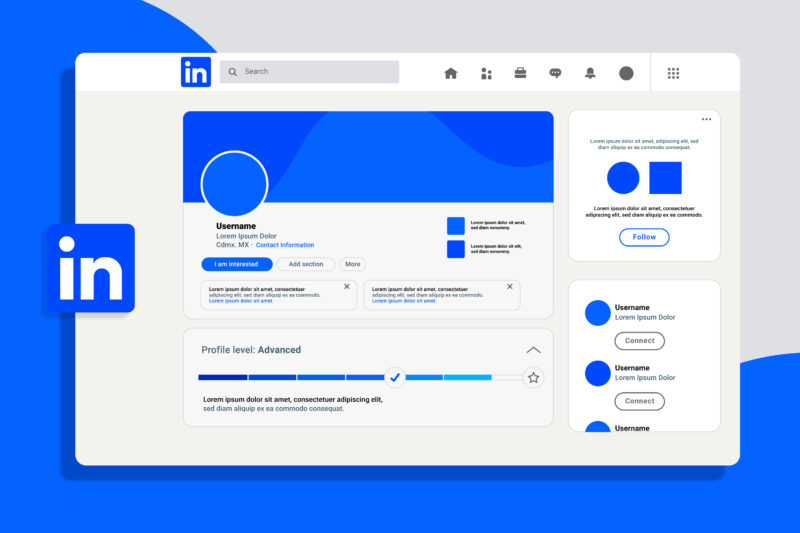In today’s rapidly evolving business landscape, the role of Chief Marketing Officers (CMOs) has become more critical than ever. As companies strive to drive growth and stay ahead of the competition, CMOs are at the forefront of formulating strategies and making key decisions that directly impact the bottom line. To navigate the complexities of the marketing world and achieve success in 2024, CMOs must prioritize their efforts and focus on key areas. This comprehensive guide aims to shed light on the CMO’s key priorities for driving growth and provide actionable insights for success.
Driving Growth: CMO’s Key Priorities
Driving growth is a multifaceted endeavor that requires CMOs to adopt a holistic approach. By identifying the key priorities that lead to growth, CMOs can chart a clear path towards success. The following areas should be at the top of every CMO’s agenda:
Boosting Pipeline: Strategies for Success
A robust sales pipeline is the lifeblood of any business, and CMOs play a crucial role in driving its growth. By implementing effective lead generation strategies and optimizing lead nurturing processes, CMOs can ensure a steady stream of high-quality leads for the sales team. Collaborating closely with sales and aligning marketing efforts with revenue goals are essential to boosting the pipeline.
One effective strategy for boosting the pipeline is through content marketing. By creating valuable and informative content that resonates with the target audience, CMOs can attract potential customers and generate leads. This can be done through blog posts, whitepapers, case studies, and other forms of content that address the pain points and challenges of the target market.
Another important aspect of boosting the pipeline is leveraging social media platforms. CMOs can utilize social media channels to engage with potential customers, share valuable content, and build brand awareness. By actively participating in relevant industry discussions and establishing thought leadership, CMOs can position their company as a trusted authority, attracting more leads to the pipeline.
Maximizing Budget: Smart Investments for ROI
CMOs face the ongoing challenge of allocating marketing budgets effectively to maximize return on investment (ROI). By leveraging data-driven insights and investing in high-impact marketing channels, CMOs can optimize their budgets and achieve greater results. Additionally, prioritizing experimentation and testing new marketing tactics can uncover untapped opportunities for growth.
One effective way to maximize the budget is through performance marketing. By closely monitoring the performance of marketing campaigns and channels, CMOs can allocate resources to the most effective channels that generate the highest ROI. This can be done by analyzing key metrics such as conversion rates, cost per acquisition, and customer lifetime value.
Another strategy for maximizing the budget is through strategic partnerships and collaborations. CMOs can identify synergistic companies or influencers in their industry and explore opportunities for joint marketing initiatives. By pooling resources and leveraging each other’s audience, CMOs can reach a wider target market and generate more leads without significantly increasing the marketing budget.
Converting Leads: Techniques for Success
Converting leads into paying customers is a constant pursuit for CMOs. By implementing a comprehensive lead conversion strategy and leveraging marketing automation tools, CMOs can efficiently guide prospects through the sales funnel and increase conversion rates. Personalization and targeted messaging tailored to specific buyer personas can significantly enhance the effectiveness of lead conversion efforts.
One effective technique for lead conversion is through lead nurturing campaigns. CMOs can create a series of automated emails that are triggered based on the prospect’s behavior and engagement with the brand. These emails can provide valuable information, address common objections, and offer incentives to encourage the prospect to take the next step in the buying process.
Another technique for lead conversion is through social proof. CMOs can leverage customer testimonials, case studies, and reviews to build trust and credibility with potential customers. By showcasing the success stories of existing customers, CMOs can alleviate any doubts or concerns that prospects may have and increase the likelihood of conversion.
Increasing ARPU: Strategies for Revenue Growth
Average Revenue Per User (ARPU) is a critical metric that CMOs must focus on to drive revenue growth. By analyzing customer behavior, identifying upsell and cross-sell opportunities, and implementing personalized pricing strategies, CMOs can increase customer lifetime value and ultimately boost ARPU. The growth in ARPU directly translates to higher revenue and profitability.
One strategy for increasing ARPU is through upselling and cross-selling. CMOs can analyze the purchasing patterns and preferences of existing customers to identify additional products or services that may be of interest to them. By offering personalized recommendations and incentives, CMOs can encourage customers to upgrade their purchases or make additional purchases, thereby increasing their average spend per user.
Another strategy for increasing ARPU is through pricing optimization. CMOs can conduct market research and competitor analysis to determine the optimal price points for their products or services. By implementing dynamic pricing strategies, CMOs can adjust prices based on factors such as demand, seasonality, and customer segments, maximizing revenue without sacrificing customer satisfaction.
Retaining Customers: Building Long-Term Relationships
Customer retention is equally important as customer acquisition for driving growth. CMOs must prioritize building long-term relationships with customers by implementing effective customer loyalty and retention programs. By personalizing customer experiences, delivering exceptional customer service, and continuously engaging with customers, CMOs can foster loyalty and advocacy, leading to higher retention rates.
One effective way to retain customers is through personalized communication. CMOs can leverage customer data and segmentation to tailor their marketing messages and offers to individual customers. By sending personalized emails, offering exclusive discounts, and providing relevant content, CMOs can make customers feel valued and appreciated, increasing their loyalty to the brand.
Another strategy for customer retention is through proactive customer support. CMOs can implement a robust customer support system that is easily accessible and responsive. By promptly addressing customer inquiries, resolving issues, and going above and beyond to exceed customer expectations, CMOs can build trust and loyalty, reducing the likelihood of churn.
Overcoming Obstacles: Challenges Faced by CMOs
While the path to driving growth may seem straightforward, CMOs face numerous challenges that can hinder their efforts. By being aware of these challenges and proactively addressing them, CMOs can overcome obstacles and achieve their goals. The following are some of the most significant challenges that CMOs may encounter:
One of the key challenges that CMOs face is navigating the future. The marketing landscape is constantly evolving, and CMOs must stay ahead of the curve to drive growth effectively. It is crucial for CMOs to keep a pulse on emerging trends and predict future shifts in consumer behavior and market dynamics. By doing so, CMOs can adapt their strategies and stay agile in an ever-changing environment.
In the year 2024, CMOs will need to embrace technologies like artificial intelligence, machine learning, and automation to stay competitive. These technologies have the potential to revolutionize the way marketing campaigns are executed and consumer insights are gathered. By leveraging AI and machine learning algorithms, CMOs can analyze vast amounts of data to gain valuable insights into consumer preferences and behavior. Automation, on the other hand, can streamline repetitive tasks and free up time for CMOs to focus on strategic initiatives.
However, adopting these technologies is not without its challenges. CMOs will need to navigate the complexities of implementing AI and machine learning systems within their organizations. They will need to ensure that the data being used is accurate, reliable, and ethically sourced. Additionally, CMOs will need to address any concerns around data privacy and security to build trust with their customers.
Another challenge that CMOs may face is the increasing demand for personalized marketing experiences. Consumers today expect brands to deliver tailored messages and experiences that resonate with their individual needs and preferences. CMOs must find ways to collect and analyze customer data to create personalized marketing campaigns that cut through the noise and deliver relevant content to the right audience at the right time.
Furthermore, CMOs must also navigate the ever-expanding digital landscape. With the rise of social media, mobile devices, and other digital platforms, CMOs need to develop strategies that effectively engage consumers across multiple channels. This requires a deep understanding of each platform and its unique characteristics, as well as the ability to create cohesive and consistent brand experiences across all touchpoints.
Lastly, CMOs must also overcome internal challenges within their organizations. They need to build strong relationships with other departments, such as sales, finance, and IT, to ensure alignment and collaboration. CMOs must effectively communicate the value of marketing initiatives and secure the necessary resources and support from other stakeholders.
In conclusion, the role of a CMO is not without its challenges. However, by staying ahead of emerging trends, embracing technology, personalizing marketing experiences, navigating the digital landscape, and fostering internal collaboration, CMOs can overcome these obstacles and drive growth for their organizations.
Accelerating Pipeline: Unleashing the Power of Next Best Action
To accelerate the pipeline and drive growth, CMOs should harness the power of next best action. By leveraging data and advanced analytics, CMOs can identify the most effective actions to take at each stage of the customer journey. Implementing personalized and timely interactions with prospects based on predictive models can significantly increase conversion rates and revenue.
Imagine a scenario where a potential customer visits your website for the first time. They navigate through your product pages, read some blog posts, and even add a few items to their shopping cart. However, they hesitate to make a purchase and leave your site without completing the transaction. This is a missed opportunity, but with the power of next best action, you can turn this situation around.
By analyzing the customer’s behavior on your website, you can gain valuable insights into their preferences and intentions. With this information, you can create personalized recommendations and targeted offers that are tailored to their specific needs. For example, you can send them an email with a special discount on the items they added to their cart, enticing them to come back and complete the purchase.
But the power of next best action doesn’t stop there. As the customer continues their journey, you can continue to engage them with relevant and timely interactions. For instance, if they have been browsing your blog posts about a particular topic, you can send them a personalized email with additional resources or a webinar invitation related to that topic. This not only helps to build a stronger relationship with the customer but also positions your brand as a trusted source of information and expertise.
Furthermore, by leveraging predictive models, you can anticipate the customer’s future needs and proactively reach out to them with relevant offers. For example, if a customer has purchased a smartphone from your online store, you can use predictive analytics to identify when they are likely to upgrade their device. Armed with this knowledge, you can send them a targeted email or push notification with exclusive deals on the latest smartphone models, increasing the likelihood of a repeat purchase.
It’s important to note that the power of next best action is not limited to digital interactions. CMOs can also apply this strategy to offline channels, such as direct mail or in-store experiences. By integrating data from various touchpoints, you can create a seamless omnichannel experience for your customers, where every interaction feels personalized and relevant.
In conclusion, by harnessing the power of next best action, CMOs can accelerate the pipeline and drive growth. By leveraging data, advanced analytics, and predictive models, CMOs can create personalized and timely interactions with prospects at each stage of the customer journey. This not only increases conversion rates and revenue but also helps to build stronger relationships with customers and position your brand as a trusted source of information and expertise.
The Critical Role of Early Stage Pipeline in Revenue Success
The early stage pipeline plays a pivotal role in revenue success. CMOs must focus on filling the top of the funnel with high-quality leads and ensuring seamless handoffs to the sales team. By implementing effective lead nurturing strategies and optimizing early-stage processes, CMOs can fuel revenue growth and set the foundation for long-term success.
When it comes to revenue success, the early stage pipeline acts as the lifeblood of a company’s sales and marketing efforts. It is the starting point where potential customers are identified and engaged. CMOs understand the significance of this stage and the impact it can have on the overall revenue generation process.
One of the key responsibilities of a CMO is to ensure that the top of the funnel is constantly filled with high-quality leads. These leads are the foundation upon which revenue growth is built. CMOs must employ various lead generation strategies to attract the right prospects and convert them into potential customers.
However, filling the pipeline with leads is just the first step. CMOs must also ensure that there is a seamless handoff between the marketing and sales teams. This handoff is crucial to maintain the momentum and ensure that leads are effectively nurtured and guided through the sales process.
Lead nurturing is a critical component of revenue success. CMOs must develop and implement effective lead nurturing strategies to keep potential customers engaged and interested in the company’s offerings. This involves personalized communication, targeted content, and timely follow-ups to build trust and credibility.
Optimizing early-stage processes is another key aspect of revenue success. CMOs need to constantly evaluate and refine their lead generation and nurturing strategies to maximize results. This may involve leveraging data and analytics to identify areas for improvement, testing different approaches, and adopting innovative technologies to streamline the early-stage pipeline.
By focusing on the early stage pipeline, CMOs can lay the groundwork for long-term revenue success. A well-nurtured and optimized pipeline not only generates immediate revenue but also sets the stage for future growth. It allows companies to build a strong customer base, establish brand loyalty, and create a sustainable revenue stream.
In conclusion, the critical role of the early stage pipeline in revenue success cannot be overstated. CMOs must prioritize filling the top of the funnel with high-quality leads, ensuring seamless handoffs to the sales team, implementing effective lead nurturing strategies, and optimizing early-stage processes. By doing so, they can fuel revenue growth and set the foundation for long-term success.
Demystifying AI and ML: Understanding the Key Differences
Artificial intelligence (AI) and machine learning (ML) are two buzzworthy terms that are often used interchangeably. However, understanding the key differences between the two is essential for CMOs. AI refers to the broader concept of machines imitating human intelligence, while ML is a subset of AI that focuses on algorithms and statistical models. CMOs can leverage AI and ML technologies to gain valuable insights, automate processes, and drive growth in 2024.
When it comes to AI, it encompasses a wide range of technologies and applications that aim to replicate human intelligence. This includes natural language processing, computer vision, robotics, and expert systems. AI systems are designed to understand, reason, learn, and make decisions based on the data they are fed. They can analyze vast amounts of information, detect patterns, and make predictions or recommendations.
On the other hand, ML is a specific branch of AI that focuses on algorithms and statistical models. It involves training machines to learn from data and improve their performance over time without being explicitly programmed. ML algorithms can automatically identify patterns and make predictions or decisions based on the patterns they have learned. This technology is particularly useful in areas such as predictive analytics, fraud detection, recommendation systems, and image recognition.
CMOs can benefit greatly from leveraging AI and ML technologies in their marketing strategies. By harnessing the power of AI, they can gain valuable insights into customer behavior, preferences, and trends. AI-powered analytics tools can analyze vast amounts of data from various sources, such as social media, customer interactions, and market research, to provide actionable insights that can drive marketing campaigns and strategies.
ML, on the other hand, can help CMOs automate processes and make data-driven decisions. By training ML models on historical data, CMOs can predict customer behavior, optimize pricing strategies, personalize marketing messages, and identify the most effective channels for reaching their target audience. ML algorithms can continuously learn and adapt to changing market conditions, allowing CMOs to stay ahead of the competition and drive growth.
As CMOs navigate the challenges and opportunities of 2024, focusing on driving growth and prioritizing key areas will be paramount. By boosting the pipeline, maximizing budget allocation, converting leads, increasing average revenue per user (ARPU), and retaining customers, CMOs can steer their organizations towards sustained growth. Overcoming challenges, embracing emerging trends, and leveraging the power of AI and ML will further solidify CMOs’ positions as key drivers of growth in the years to come.
Furthermore, AI and ML technologies are constantly evolving and improving. In the future, CMOs can expect even more advanced AI systems that can understand and interpret human emotions, enabling more personalized and empathetic marketing experiences. ML algorithms will become more sophisticated, allowing for more accurate predictions and recommendations. The integration of AI and ML with other emerging technologies, such as augmented reality (AR) and virtual reality (VR), will open up new possibilities for immersive and interactive marketing campaigns.
However, as AI and ML become more prevalent in the marketing landscape, CMOs must also address ethical considerations. Ensuring the responsible and ethical use of AI and ML technologies is crucial to maintain customer trust and avoid potential pitfalls. CMOs must be mindful of issues such as data privacy, algorithmic bias, and transparency in AI decision-making processes.
In conclusion, AI and ML are powerful technologies that can revolutionize the marketing industry. Understanding the differences between AI and ML is essential for CMOs to effectively leverage these technologies and drive growth in 2024. By embracing AI and ML, CMOs can gain valuable insights, automate processes, and make data-driven decisions that will propel their organizations towards sustained success.









